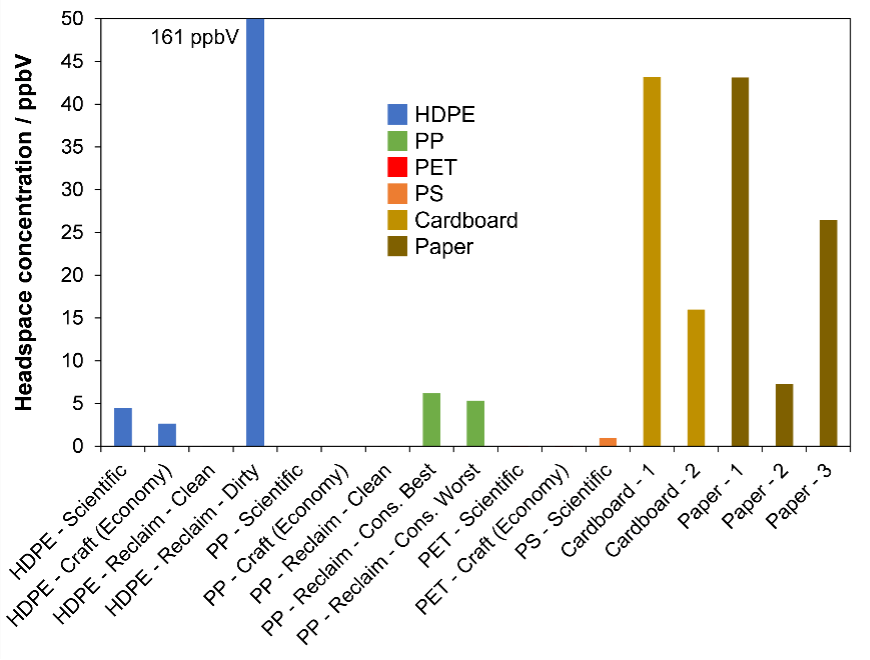 Benzene headspace concentrations in packaging products (in ppbV) determined using automated SIFT-MS for samples.
Benzene headspace concentrations in packaging products (in ppbV) determined using automated SIFT-MS for samples.
Mineral oil hydrocarbons (MOH; European Food Safety Authority, EFSA(2012)) are derived primarily from crude oil, but may also be synthesized from coal, natural gas, and biomass. MOH are typically in the C10to C50 range and can be present in food through environmental contamination, machinery lubricants, processing aids, food additives, and food contact materials (FCMs). Mineral oil aromatic hydrocarbons (MOAH) are minimized in food-grade MOH products (compared to technical mineral oils, which may contain up to 35% MOAH) due to potential carcinogenicity and mutagenicity. Food-grade mineral oils are therefore comprised largely of mineraloil saturated hydrocarbons (MOSH).
MOH are extremely complex mixtures and tend to elute from standard chromatographic analyses as a broad band, rather than resolving individual components (EFSA (2012)). Moreover, testing for them in food products adds another layer of complexity (Bratinova and Hoekstra (2019)), for which a highly sophisticated automated sample preparation and analysis solution has been commercialized (liquid chromatography- gas chromatography-flame ionization detection/mass spectrometry (LC-GC-FID); GERSTEL), delivering a throughput of two samples per hour.





